#DermatologistInDelhi
Text
Is sunscreen important in cloudy weather? | Can UVA Radiation pass the clouds? #shorts #sunscreen
Contact us At 8287640479
Address- AWISH CLINIC, J-232, Pocket -J, Sarita Vihar, New Delhi-110076
#sunscreen#importance#uva#uvb#radiation#skinprotection#Drvijaykumar#awishclinic#sunscreenimportance#drvijay#instareels#reels#reelkarofeelkaro#reelsviral#instantly#winglancer#instagood#delhidermatologist#dermatologistindelhi#dermatologist
0 notes
Text
HOW SHOULD YOU PREPARE FOR A DERMATOLOGIST APPOINTMENT?
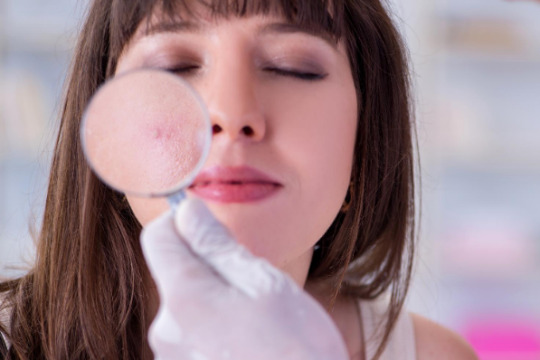
Visiting the best dermatologist in Delhi helps us in keeping our skin, hair and nail as healthy as it can possibly be. We all know the consequences of any skin issue; it causes irritation, itchiness and many other problems. You might think of some issue that looks like a simple rash but your dermatologist can tell something different that you might even not know.
0 notes
Photo

Micro Needling is the Best Option If you are
* Pregnant
* Scar easily
* Have facial eczema
https://www.rakshaaskinclinic.com/
#MicroNeedling#Pregnant#Facialeczema#RakshaaSkinClinic#SkinClinic#SkinClinicInDelhi#Delhi#DermatologistInDelhi#DrRakeshJangra
0 notes
Text
6 Essential Oils to Tighten Your Skin
Causing dullness and loosening of skin is ageing which is a natural process. If taken proper care, the ageing effects can be prevented. Assisting you in the process are ageing oils which are the concentrated powerhouse remedies. Possessing the capability to do wonder, when used properly, they can be excellent for your skin.
Furnished below are 6 essential oils which can be used for amazing anti-ageing and skincare treatment
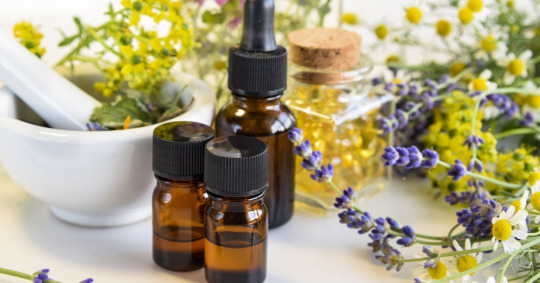
1. Pomegranate Oil
The quality of this oil, being used in cancer treatment, makes it amongst the list of important oils. Pomegranate oil aids and improves blood circulation in our bodies and is an excellent blood conductor too. For a young and healthy look, apply it to clean and bare skin.
2. Frankincense Oil
With a small molecular structure, the oil can penetrate your bodily structure protecting your skin cells alongside encouraging the growth of new cells. It improves elasticity and keeps skin oxygenated.
3. Neroli Oil
Considered to the best for skin tightening, Neroli oil properties are known to regenerate skin cells. It provides your skin with great anti-ageing properties and improves skin resilience.
4. Lavender Oil
Working to tone and rejuvenate the skin cells, Lavender oil has antibacterial properties. It can help to reduce stress and aids in sleeping with its pleasant smell, which is an important factor in the ageing process.
5. Almond Oil
This oil is used most commonly for a lot of purposes. The widely and easily available oil has a lot of vitamin E in it and it makes it great anti-ageing oil. Maintain the healthy appearance of your skin with Almond oil.
6. Geranium Oil
Resulting in the reduction of wrinkles and stretch marks, it has the properties of repairing collagen and increasing the elasticity of your skin. Get a glowing appearance and give your skin supply of extra nourishment with Geranium oil.
#bestdermatologistindelhi#bestdermatologistinrohini#dermatologistindelhi#dermatologistinrohini#skintreatmentindelhi#skinclinicindelhi#skincareclinicindelhi#bestskintreatmentinrohini#skincareclinicinrohini
0 notes
Text
Hair Loss: Diagnosis & Therapy
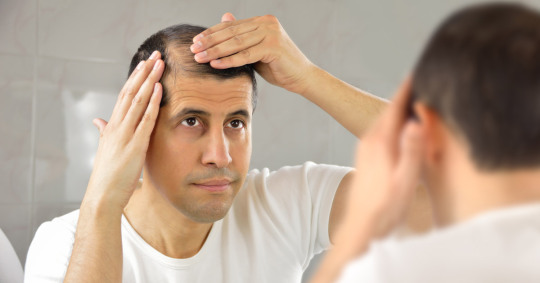
Full head hair is generally considered a beauty ideal. The self-confidence of many affected people suffers, even more, when there is increased hair loss. The possible causes for this range from genetic predisposition to pregnancy to various diseases. There are different forms of hair loss that have different causes. The respective treatment also depends on the trigger, says dermatologist in Delhi.
Life cycle of hair
Normally, humans have around 80,000 to 100,000 hairs on the head - blondes somewhat more, redheads less. There are around a million sac-shaped hair follicles on the head, which are only a few millimeters in size. About every tenth of these hair roots is currently active and forms new hair. The life cycle of the hair is divided into three sections:
Growth phase: 80 to 90 percent of the hair is in this phase. It takes about two to six years on average and determines the maximum hair length. Hair grows about an inch a month. People with a rather short hair growth phase can therefore not get very long hair, even if they have it cut rarely and little.
Transitional phase: This section is short.
Rest phase: After this period of about two to four months, the hair falls out on its own. We usually lose about 50 to 60 hairs a day, with a hair wash it can be up to 100 hairs.
If more hair falls out, this life cycle is disturbed and the cause should be clarified by a dermatologist in Vishnu Garden. Depending on the trigger, various options for hair fall treatment in Rajouri Garden are available.
How is the diagnosis of hair loss made?
In consultation with the person affected, the dermatologist in Rajouri Garden clarifies whether there is a family history of hair loss or a one-sided diet. In addition to a connection with possible causes (is eg infections, metabolic disorders or hair-damaging influences) wanted. This is followed by a physical examination, especially of the scalp, and, if necessary, a microscopic examination of the hair root and skin samples. Blood tests may also be necessary.
Forms, causes, and therapy of hair loss
There are different forms of hair loss that have different causes. The respective treatment also depends on the trigger. The options range from various local therapies to systemic therapies and so-called mesotherapy. Low-dose substances are injected directly into the scalp, explains skin specialist in Rajouri Garden.
If these treatments are not or not sufficiently effective and the suffering is high a wig, a toupee or hair plaits can help. Hair transplant in Delhi should be used with caution and should only be performed by specialized professionals, as it can lead to complications such as rejection and chronic infections.
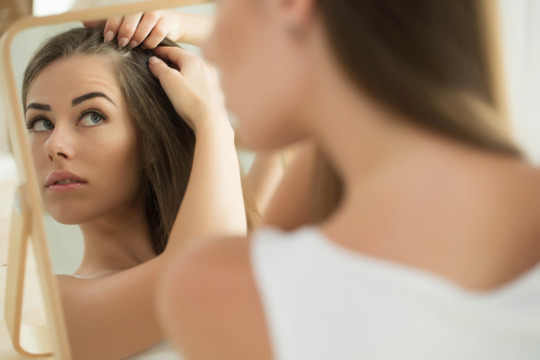
Conditioned hair loss
Causes: This genetic and hormonal form (androgenetic alopecia) is responsible for hair loss in around 95 percent of cases - both in women and, even more frequently, in men. Increased sensitivity of the hair root to male hormones (androgens) reduces the size of the hair follicles. Hair production is restricted and hair also falls out faster. In men, there is increased beard growth. An increase in the sebum glands on the head also contributes to the loss of scalp hair, says skin specialist in Vishnu Garden.
Symptoms: Hair loss often begins at puberty. In the middle years of life about every second man is affected. Frequently, "receding hairline corners" appear, which develop into partial or full baldness over time.
In women, the entire scalp thins out. At the same time, unpleasantly increased hair develops on other parts of the body, for example on the legs, lower legs, toes or on the face.
Therapy: There are no preventive measures for this form, the effect of which has been scientifically proven. Medications are available for treatment that can stop hair loss. In areas that are already bald, hair no longer grows back, because the hair roots have already shrunk and this can no longer be reversed. Different preparations are sometimes used for women and men. Most of the time, permanent use is required, suggests dermatologist in Tagore Garden.
Treatment in men: The active ingredient finasteride affects testosterone metabolism. It must be taken regularly and over a long period of time. Potency problems are a possible side effect.
Treatment in women: Combined hormone preparations ( estrogen and progestogen ) - eg the birth control pill in younger women - act as an antagonist to testosterone. Solutions containing estrogen can be applied locally to the scalp. These only work during the period in which they are used. Women - especially during pregnancy - should not use finasteride.
Treatment in women and men: The active ingredient minoxidil must be dosed lower in women than in men. It is applied locally to the scalp. The mode of action has not yet been fully clarified. Minoxidil may expand the blood capillaries due to its hypotensive effects and thereby promote blood circulation. In addition, it seems to shorten the resting phase of the hair cycle.
Circular hair loss
Causes: The triggers of the so-called alopecia areata are not exactly known, autoimmunological factors are discussed. The body's own defense cells attack the hair roots. The frequent occurrence within a family also suggests a genetic predisposition. Adolescents are affected relatively often (around one in 1,000). The psychological suffering is particularly high at this age. Stress seems to be an important trigger factor for this presumably autoimmune-related illness, says skin specialist in Tagore Garden.
Symptoms: The main characteristic is sudden circular hairless spots on the head. Since pigmented hair is mainly affected, those affected often turn gray in a relatively short time. The entire body hair can rarely fail (Alopecia Universalis). The hair can grow back spontaneously after a few months, but can then be lost again.
Therapy: Since the causes are mostly unknown, the treatment is difficult and is often little or only temporarily effective. In some cases, spontaneous healing occurs. Inflammation at the roots of the hair is attempted to be relieved by various local measures, as explained by dermatologist in Subhash Nagar:
circulation-promoting tinctures, minoxidil,
anti-inflammatory drugs,
local application of diphencypron (DPCP) or squaric acid,
Irradiation with UV light,
oral zinc administration.
Scarring hair loss
Causes: Inflammation of the scalp leads to irreversible hair loss with scarring. The following factors are possible triggers:
Physical damage: eg X-rays, burns, burns;
Deep infections: mostly with bacteria or fungi, less often with viruses;
Autoimmune diseases: eg lupus erythematosus or morphea;
Unclear cause (idiopathic): chronic, purulent, deep folliculitis (folliculitis decalvans).
Symptoms: Perifollicular inflammation and excessive cornification of the skin (hyperkeratosis) can be found in the area of the hair on the head. Mostly, scars can be seen on the scalp between the inflamed areas.
Therapy: If possible, a causal - ie mostly effective against bacteria or fungi - treatment is carried out. Depending on the severity, glucocorticoids, retinoids or immunosuppressants can also be used, says skin specialist in Subhash Nagar.
Diffuse hair loss
Causes: Above all, diseases, lack of nutrients or external damaging influences on the hair itself are the triggers, among others :
After birth or after puberty;
Infections: eg shingles, erysipelas ;
Metabolic disorders: eg diabetes, increased blood lipids, diseases of the liver or thyroid, disorders of the sex hormones;
Deficiency symptoms, eg through one-sided diets ( especially undersupply with iron, zinc, folic acid, vitamin B12 );
Hair-toxic substances: environmental pollutants, medication
Hair-damaging influences: e.g. frequent wearing of headgear, intensive combing, and brushing, rubbing, tight hair bands, tinting, dyeing, bleaching, perming, frequent washing with alkaline shampoos, hot blow-drying, intensive sun exposure.
In addition, diffuse hair loss can also occur with chronic stress, after birth or puberty, seasonally or as a normal age-related process explains dermatologist in Shastri Nagar.
Symptoms: The head hair thins more and more overall. If the cause is remedied, the hair can grow back as long as the hair roots are still intact.
Therapy: treatment or elimination of the cause.
Whom can I ask?
In the event of sudden or prolonged hair loss, you can contact the following:
General practitioner,
Specialist in dermatology and venereology.
It is advantageous if the skin specialist in Shastri Nagar has special training and sufficient experience in the treatment of hair loss. Discuss the possible therapy options, their potential chances of success and the associated costs in advance.
Read the full article
#dermatologistinDelhi#dermatologistinRajouriGarden#hairfalltreatmentinRajouriGarden#HairLoss#health#skinspecialistinRajouriGarden
0 notes
Link
In Hair Transplant, hair is transferred from the rear part of the scalp to the sparsely covered area. It is carried out under local anesthesia. The whole procedure is comfortable and carried out with utter care to ensure the patient's satisfaction.
0 notes
Photo

If you ever wondered why, this non-invasive facial treatment has taken over by storm, the answer is right here! It can unclog your poresCombat dryness & give you a hydrated skin for days. Give you younger looking skinFor more information, call us on 9873880055, 011-43533690 and book an appointment.#hydrafacials #effectivewhitening #dermatologist #Medifacial #cosmeticclinic #lasertreatments #laserskinrejuvenation #Skintreatments #laserclinic #dermatologistindelhi #facialtreatments #Cloggedpores #skinproblems #delhicapitals #Skinwhitening #delhimodels #goodskin #darkcircles #youthfulskin #brightening #dryskin #hydratedskin #brightskin #advancedskincare #Facials #Facecare #pigmentation #blemishes #besttreatment #drrituskinclinic
0 notes
Text
Reveal Gorgeous Skin with Best Non-Surgical Treatment in Delhi
Beauty defines the personality of a woman. Modern day women pay more attention to their looks and appearance. Irrespective of what they do and where they live, they believe in spending more time and money on their appearance. Natural process of ageing when combined with daily stress can damage skin. Skin sagging, loose facial skin and wrinkles often take away glow and charm from your face. Most women prefer trying home remedies to get the glow back. However, not every time such remedies work. And, this is when you can turn the clock back by simply opting for the best non-surgical treatment in Delhi.
If you are seeking skin treatments to enhance your looks and get rid of wrinkles, skin sagging and other problems then all you need to do is consult an experienced and skilled cosmetic surgeon to know more about non-surgical skin treatments.
Treatment for Wrinkles
Given that skin is the most significant part of your body, it needs special care else signs of ageing starts appearing quite early in life. Most skin problems are related to the natural process of ageing. Some of the most common signs of ageing are small lines, deep wrinkles and age-spots. Of all these signs of ageing, it is the wrinkles which leave an extremely adverse effect on a person. Botox Fillers, dermabrasion, medical microdermabrasion, Smooth beam Laser and chemical peels are some of the most common and popular non-surgical wrinkles treatment in India.
Acne Scar Treatment
Those who have acne might be well-aware of the problems it brings along. Acne scars persist for a long time causing blow to self-confidence and long-term emotional distress. These are caused by post-inflammatory damage to the skin because of pimples and acne. One of the most common reasons for acne scar is deficiency in collagen which occurs during the healing process. Acne scar treatment in Delhi not only lets you get rid of these scars but also helps in achieving smooth skin texture and gorgeous skin.
It is only after examining your skin that the cosmetic surgeon would recommend the best treatment. Laser and skin needling are the best available treatment options for getting rid of acne scars.
Filler Treatment
Looking your and gracious is synonymous to women across all age groups. These days, injectable wrinkle fillers have gained immense popularity among people. You can be assured to get a youthful and refreshing look by just spending a small part of a traditional facelift. This treatment is highly effective and gives results in about thirty minutes. Results can last for as long as four to five months. Filler treatment in Delhi is easy and fast with least risks provided you choose a board-certified, well-qualified and experienced surgeon.
Get more details visit: http://www.skintreatmentsindia.com/
Contact Information:
13 A Palam Marg, Vasant Vihar,
New Delhi-110 057, (India)
Ph.: +91-9958221983
Website: www.skintreatmentsindia.com
Website: www.drkashyap.com/cosmetic-plastic-surgery/non-surgical.html
Website: www.imageclinic.org/non-surgical.html
#bridalskincare#dermatologistinDelhi#groomingskincare#oxygenfacialtreatment#wrinklestreatmentinindia#fillertreatmentindelhi#bestnonsurgicaltreatmentindelhi#acnescartreatmentdelhi
0 notes
Text
Non-Surgical Treatment in Delhi – Get Set Go to Achieve Improved Appearance
When it comes to looks, we all want to look at our best. Being smart and attractive adds to your personality boosting your self-confidence and self-esteem. Stress, modern day lifestyle and natural process of aging soon start showing signs on your facial appearance. Many people do not want to undergo surgical procedure to revive their looks and personality. For those who are seeking non-surgical treatment in Delhi can choose plenty of treatment options the one which best suit their skin and problem.
Chemical peel treatment in Delhi
As we age in life, dead skin cells don’t slough or peel off easily as during initial years making your skin appear dull. Deep, medium and light peels are the non-surgical cosmetic treatment available for peeling away the top layer of skin, and thus improving wrinkled, sun-damaged and unevenly pigmented skin. It is also considered as the best hyperpigmentation treatment in Delhi (http://www.drkashyap.com/cosmetic-plastic-surgery/chemical-peels.html). The treatment improves the texture and colour of your skin creating youthful and refreshing look while restoring radiant, healthy and luminous appearance.
Botox treatment in Delhi
Botulinum Toxin is counted among the best solution for treating facial lines, particularly around the eyes, the forehead lines, between the brows and nose, also known as bunny lines. Botox (http://www.drkashyap.com/cosmetic-plastic-surgery/botox.html) is injected into the damaged or affected muscles for improving the look moderate to severe lines between the forehead lines, crow’s feet and eyebrows. It usually occurs to people aged between 18 and 65 years of age. Changes and improvement will be noticed for near about thirty days and results might last for four months.
Under eye dark circles treatment in Delhi
Under eye dark circles is one of the most common problems which have affected millions of people across the globe. Despite trying several methods, when you fail to get rid of dark circles, you can consider opting for non-surgical treatment options to get rid of the problem. Treatment of under eye dark circle treatment includes detoxification, chemical peels, carboxytherapy and fillers among others. Your respective cosmetic surgeon might recommend individual or combination of treatment as per your condition.
If you are interested in a Non surgical treatment (Botox, Filler, Lasers, Chemical peels, Hyper pigmentation, Cellulite, Wrinkles, Stretch Marks, Acne Scars, Mesotherapy, Sclerotherapy, Carboxytherapy, IPL) in Delhi, call +91 9958221983 to book a FREE consultation. http://www.drkashyap.com/cosmetic-plastic-surgery/non-surgical.html
chemical peel treatment in delhi, hyperpigmentation treatment in delhi, botox treatment in delhi, under eye dark circles treatment in delhi, non surgical treatment in delhi, #specialistdermatologist, #dermatologistindelhi, #skintreatment, #botox, #pigmentation, #acnescar, #lasers
0 notes
Text
An Affordable Skin Specialist & Dermatologist in Delhi.
Our skin is very sensitive, before going to use any beauty products you should consult with Dermatologist in Delihi. There are many skin care treatments are available in India like botox, acne and pimple treatment for sensitive, dry and oily skin.
Everyone has different skin so definitely everyone has different skin treatment. At Dermalife our skin specialist in Delhi providing best skin and hair treatment for men and women both. You can consult with our best dermatologist in Delhi and schedule your appointment.
#Dermatologist#SkinSpecialist#DermatologistinDelhi#SkinSpecialistInDelhi#Dermalife#SkinCare#BotoxTreatment#AcneTreatment#BestDeratologistInDelhi
0 notes
Text
Best Dermatologist in South Delhi

DermaPuritys is one of the best dermatology clinic in South Delhi. From decades we are providing advanced solutions and treatments that rejuvenate all the senses of your body and gives healthy and nutritious life to your skin. Call us at 9958250537 for enquiry.
0 notes
Photo

Face Lift Surgery Removes Loose Saggy Skin Around The Chin And Neck
https://www.rakshaaskinclinic.com/
#FaceLift#Surgery#SaggySkin#Chin#Neck#RakshaaSkinClinic#SkinClinic#SkinClinicInDelhi#Delhi#DermatologistInDelhi#DrRakeshJangra
0 notes
Text
Chemical Peeling- Why is it popular?

Chemical exfoliation, Chemoexfoliation or colloquially known as chemical peeling is a non-invasive treatment. Chemical peeling is popular due to its impact in improving in the aesthetic value of the skin. It also improves the quality of skin, medically speaking. It has been commonly in use since 18th century.
How is it works?
The procedure followed for chemical peeling is fairly simple but involves caution and tailoring to meet needs and requirements of a patient lest complication and side effects could not be minimized.
Chemical peeling is done by application of caustic agent to the desired area of skin to cause a controlled simulation of Epidermis and dermis. By inflicting controlled injury to the skin, it proliferate the accumulation of collagen, elastin, and reorganization of structural dermal tissue and protein.
The application of caustic agent i.e. type, number of layers, agent used, etc. depends on the depth of treatment required. The treatment may be Superficial, Medium or Deep.
Types of Peel and Chemicals used
It can be more understood by discussing its type and variation in chemicals used.
1.Superficial Peels:
Superficial peels are the least penetrating peels in skin. This treatment is done to improve extrinsic aesthetic value of the skin. It improves the quality and beauty of the visible skin i.e. epidermis.
Penetration: Only upper layer epidermis is penetrated by superficial peel.
Chemicals Used: Glycolic (30–50%), salicylic acid (30%), pyruvic acid (50%), etc. is commonly used agent for treatment.
Downtime: Least downtime compared to other peels. Patient experiences mild irritation, redness and burning sensation. For a day or two which can be minimized by protective ointment.
Uses: Exfoliating the outermost layer of the skin, treating fine wrinkles, acne, uneven skin tone and dryness.
2. Medium-depth Peels:
Medium Depth Peels penetrates deeper than superficial peels and solves much deeper problems of our skin.
Penetration: It penetrates complete epidermis and the uppermost layer of dermis.
Chemicals Used: Glycolic (70%) and Jessner’s Solution (30-50%) is used to achieve depth. Multi layered application of 20 to 40% salicylic acid and pyruvic acid can also be used.
Downtime: As the penetration is deeper, downtime increases. Redness, Swelling and stinging sensation may be experienced depending of the skin type. The effects can be felt for 7-14 days on the treated area. Cool Compresses and protective ointment reduces the sensation of the effects.
Uses: Treatment of fine rhytides, chronic actinic photo damage, superficial hyperpigmentary disorders (e.g., melasma), superficial acne scars, and even premalignant actinic keratosis is possible with medium depth peels.
3. Deep Peels:
Deep Peels has most penetrative effect on the affected area and works on root causes of the problem on the visible skin.
Penetration: It penetrates complete epidermis and dermis all the way to the mid-reticular dermis.
Chemicals Used: Baker-Gordon phenol peel is commonly used agent for the Deep peel. It provides maximum penetration of the skin to provide maximum results.
Downtime: As the penetration is deeper, downtime increases. Redness, swelling, stinging and throbbing sensation may be experienced depending of the skin type. The effects can be felt for a month or more on the treated area. Painkiller and surgical dressing helps in reducing the sensation and effects.
Uses: Treatment of deeper wrinkles, scars or precancerous growths, chronic actinic photo damage and chrono damage, extensive hyperpigmentary disorders (e.g., melasma), acne scars, and even premalignant actinic keratosis is possible with Deep peels.
Do you need it?
There are various indications on skin which helps in determining whether you need chemical peeling for treating and improving the quality of skin.
PIGMENTARY DISORDERS such as Lentigines, Ephelides and Melasma.
INFLAMMATORY DISORDERS such as Acne, Rosacea.
Scarring issues such as Acne Scarring, Traumatic scarring, Surgical scarring.
Chrono-Aging effects such as Superficial and medium depth Rhytides.
Pre-cancerous Lesions on the skin such as in Actinic Keratoses.
If any of the diseases and skin issue has been your concern, then chemical peeling is treatment for you. Ignoring the problems would only worsen it and reduce the beauty and texture of the skin.
Where to get it done?
Chemical peel in mainly used to address cosmetic issue, therefore it is widely believed that it can be done at any Beauty salon or at home. Chemical peeling requires tailoring on the basis of different skin types, skin tone, texture, medications, etc. Although a simple procedure, requires utmost care and caution lest increase in downtime and the side effects and be experienced. Chemical peeling includes controlled injury to skin to improve the feel, volume and tone of the skin. A Dermatologist are officially certified to do chemical peeling and provide and medication required post-treatment.
Maintaining your beauty is important to boost confidence and esteem. Visit your Dermatologist to know more about the procedure and how it can benefit you.
Best Dermatologist in Delhi
Best Dermatologist in Rohini
Dermatologist in Delhi
Dermatologist in Rohini
0 notes
Text
In Winter, Get Rid of Skin Blemishes
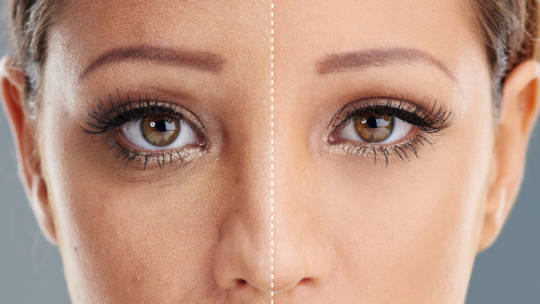
After the summer months and Christmas holidays, the perfect time has come to perform treatments against different types of hyperpigmentation or dark spots on our skin, suggests skin specialist in Rajouri Garden.
Types of spots
The melasma is diffuse and larger hyperpigmentation, which can have a color ranging from gray to dark brown ash and can be located in the front, cheeks, nasal, supralabial back, chin, upper limbs or neck. It can occur during or after pregnancy.
The solar lentigines are more localized small spots with a variable color from light brown to dark.
There are other spots that can also occur in areas such as cleavage, back, and lower limbs, and depend on sun damage, medication, exposure to chemicals and the skin type of patients. Thus, patients with lighter skin will have a greater tendency to present this type of lesions, warns dermatologist in Rajouri Garden.
Available techniques
To improve these pigment alterations, there are multiple techniques a dermatologist in Subhash Nagar can use, which allow individualizing the treatment for each patient.
The basis of any treatment is always a correct photoprotection. A protector of factor 30 or higher should always be used and appropriate renovations (every 2 hours) carried out in the exposed areas. In addition, techniques such as chemical peels offer an improvement in a short time not only of the pigment but also of the homogeneity of the color, texture, and luminosity of the skin and even the slight signs of photo-aging (hyperkeratosis, fine wrinkles, alterations of the color, dull skin, yellowish hue).
There are many peels aimed at specifically improving the skin pigment. Among them, surface-media are the most used due to their high effectiveness and tolerance, without requiring weeks off from routine life. These peels work at the level of the epidermis and superficial dermis, for which the result is redness and fine desquamation, tolerable on a daily basis. However, deep peels, when reaching deep dermis and generate more intense exfoliation, can cause bleeding and scabs, so it is usually necessary to "rest" the routine for 1-2 weeks after use, suggests dermatologist in Tagore Garden.
In addition to peeling techniques, many other physical therapies such as radiofrequency, laser, pulsed light or cryotherapy. They can help improve skin tone and texture.
One of the keys to success with depigmenting therapies is constancy and continuity, not only with photoprotection but also with maintenance treatments. Therefore, once the desired result has been achieved, we must not forget to continue the treatment prescribed by the dermatologist in Shastri Nagar to maintain it. Also, during the summer months, we must perform even more intense sun protection and consult the dermatologist in Delhi about the depigmenting treatments valid for use during the months of greatest UV radiation.
Read the full article
0 notes
Photo

Mesotherapy Rejuvenates And Tighten Skin, And Remove Excessive Fat
https://www.rakshaaskinclinic.com/
#Mesotherapy#Rejuvenates#TightenSkin#ExcessiveFat#RakshaaSkinClinic#SkinClinic#SkinClinicInDelhi#Delhi#DermatologistInDelhi#DrRakeshJangra
0 notes
Photo
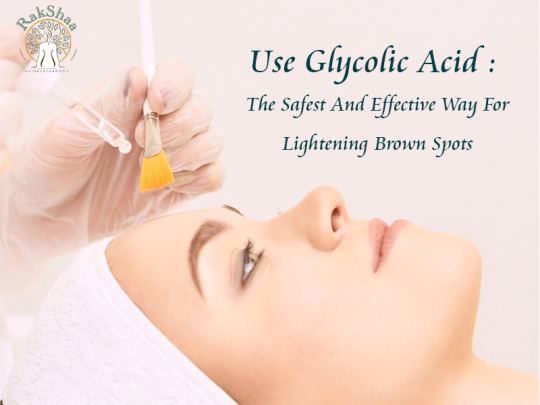
Use Glycolic Acid : The Safest And Effective Way For Lightening Brown Spots
https://www.rakshaaskinclinic.com/
#Glycolic#Acid#BrownSpots#RakshaaSkinClinic#SkinClinic#SkinClinicInDelhi#Delhi#DermatologistInDelhi#DrRakeshJangra
0 notes